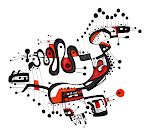A professional dancer presents great skill of indian classical dancing at a tribute ceremony to great dancer Uday Shankar here in kolkata.
A mudrā (Sanskrit: मुद्रा, lit. "seal") is a symbolic or ritual gesture in Hinduism and Buddhism. While some mudrās involve the entire body, most are performed with the hands and fingers. Mudrā (Sanskrit) is "spiritual gesture" and energetic "seal of authenticity" employed in the iconography and spiritual practice of Indian religions and Taoism.
Mudrā iconography of Hindu and Buddhist art of the Indian subcontinent, and described in the scriptures, such as Nātyaśāstra that lists 28 asaṁyuta ("separated", meaning "one-hand") and 24 saṁyuta ("joined", meaning "two-hand") mudrās. Mudrā positions are usually formed by both the hand and the fingers. Along with āsanas ("seated postures"), they are employed statically in the meditation and dynamically in Nāṭya practice of Hinduism. Each mudrā has a specific effect on the practitioner. Common hand gestures are to be seen in both Hindu and Buddhist iconography. In some regions, for example Thailand and Laos, these are different from each other but related iconographic conventions are used.
http://en.wikipedia.org/wiki/Mudra





